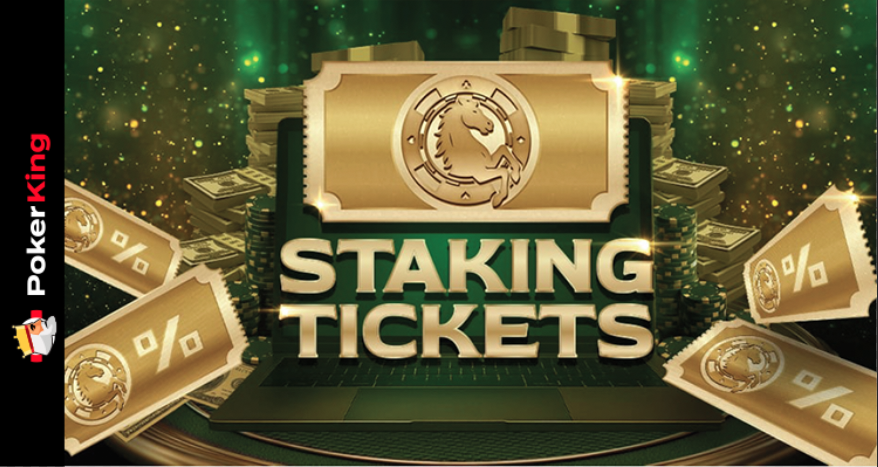

Poker Variance Part 2: its influence on cash games

After the introduction to variance in poker in the first part dedicated to this curious and -for many- mysterious factor, we are going to continue talking about variance, this time focusing on the influence it has on the so-called 'cash games'.
What are cash games?
Let's start with the basics. A cash game is
understood as that type of poker game in which there is a measured balance
between the chips wagered and the real money. This is not the case in poker
tournaments, where it is usual to receive a certain amount of chips in
exchange for money (known as buy-in and stack) and all players will have the
same chips.
In cash games the poker tables are divided
according to the levels of the blinds, the blinds of each table being fixed at
all times. The tables will have a capacity of between 2 and 10 players,
being the most common the tables of 5 or 6 players.
A basic aspect of cash games is that there is,
according to the range of blinds, a minimum and maximum limit to match the
players' stacks. To give you an idea, for blinds of €1/€2 the minimum limit
will be approximately €40, while the maximum is set at €200.
Time limitations do not exist in cash game games. A player can stay at the table as long as he wants and can leave the table at any time and enter as long as there is a free seat. However, be careful: what is not allowed is to withdraw money from the stack without leaving the table first. That is to say, you can not make actions when the hand is developing, you must always do it when the hand is over and always respect the minimum time to rejoin.
The variance in poker cash
games
In poker, variance is a complex term whose
study and influence changes depending on the type of games. To understand
what is the variance in poker during a cash game, it is necessary to know well
the term "EV BB/100", which corresponds to the blinds that you
win for every 100 hands played, in expected value (EV).
Therefore, it is the indicator that allows us
to study the impact of variance in an optimal way, although it does not mean
that it is the best indicator to measure our results as a whole, since
there are other factors that can influence it.
Let's see it better with an example: let's imagine we are at a NL100 table (with the blinds set at 0.5€/1€). A player will win at 10 EV/BB100 in 5,000 hands, playing only one table, and will get a monthly profit of €500 per month. On the other hand, one who opens more tables simultaneously and plays 50,000 hands per month, with a win ratio of 5 BB/100, will be earning more or less about 2,500 euros per month constant.
Factors to take into
account to know the variance in cash games
To study the influence of variance in cash
poker, it is essential to pay attention to two basic aspects: the skill as
players and the standard deviation in BB/100. To give you an idea, the
parameters considered standard for NL Holdem (NLH) and Pot Limit Omaha (PLO)
are the following:
- NLH Full-ring: between 60 and 80 BB/100.
- NLH 6-max: between 75 and 120 BB/100.
- PLO Full Ring: between 100 and 140 BB/100.
- PLO 6-max: between 120 and 160 BB/100.
Taking into account that, since the variance is
the square of the standard deviation, we can say that the lower the number of
players per table, the higher the variance, and that it will have a greater
incidence in Pot Limit Omaha than in NL Holdem.
Another important issue that many players
forget is that in poker variance affects not only the final result: it also has
an important impact on the EV, the expected value. It is also important to
remember that the distribution of cards that players receive, both
ourselves and our opponents, is always marked by the variance. Therefore,
the most important thing is always to have confidence in our game and get a
significant sum of hands. Only in this way will the factor converge.
To simplify these calculations it is possible
to use one of the many virtual calculators designed to perform, by themselves and
automatically and infallibly, the calculations around the variance in poker in
cash poker games and in other forms of play.
Normally, when studying the variance, graphs are obtained that provide useful information about the expected value, the possible results of the player with different levels of confidence and the range of possibilities that the player faces, including the most dispersed and improbable results, with a percentage of confidence of around 5%.
More of this Guide:
You may also like

The Best Casinos in the World to Play Poker in 2025
The Best Casinos in the World to Play Poker in 2025For poker lovers, nothing compares to the thrill of playing at a world-class casino, surrounded by professionals, bright lights, and million-dolla...

$698,048 CONFISCATED FROM CHEATERS
PLAY SAFE ON POKERKING - $698,048 CONFISCATED FROM CHEATERSAt POKERKING we know that the problem of cheating in poker concerns everyone looking for a fair and competitive game.Motivated by the desi...

How to Detect Bluffs in Poker and Use Them to Your Advantage
How to Detect Bluffs in Poker and Use Them to Your AdvantageBluffing in poker is one of the most powerful and risky weapons in the game. It’s not just about deceiving opponents, but also knowing wh...













